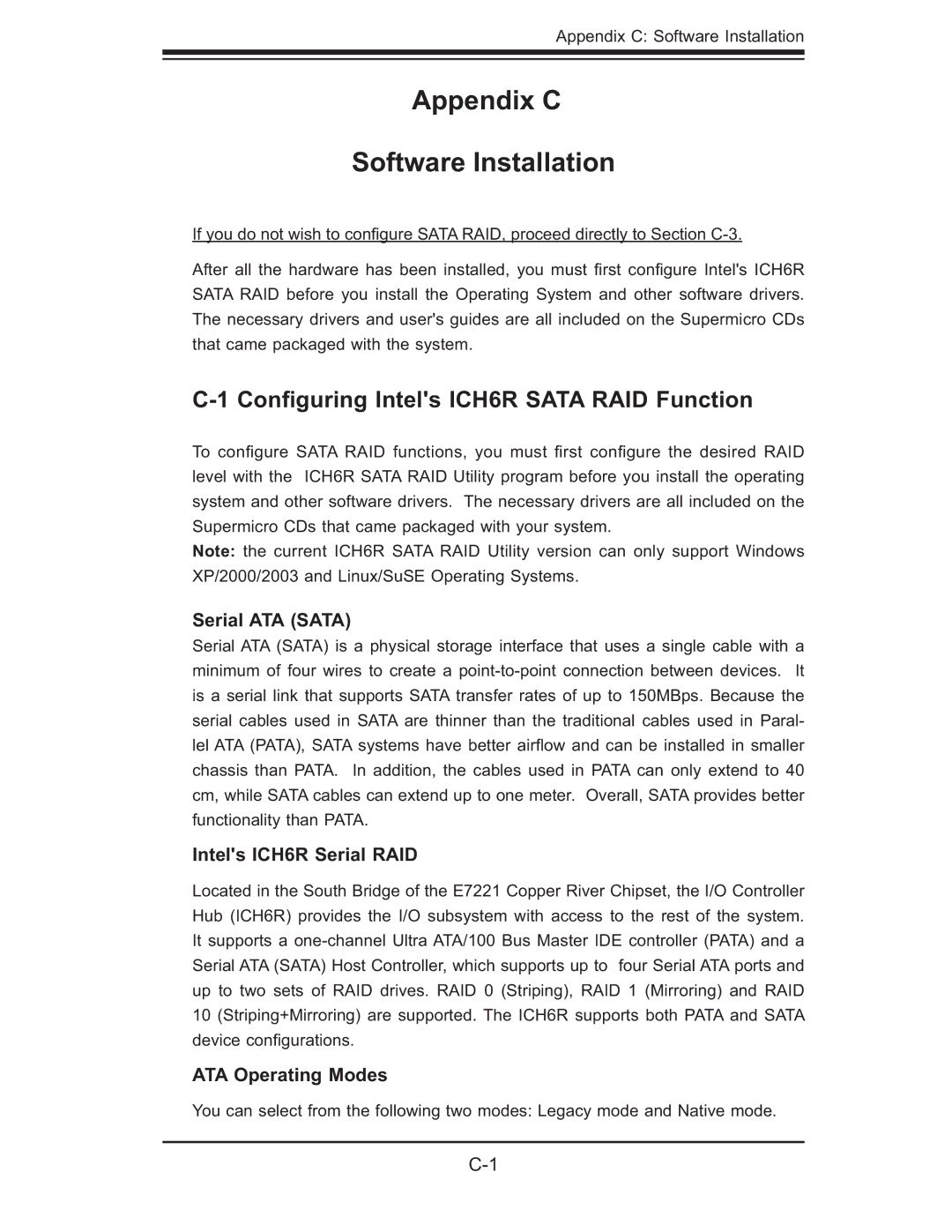
Appendix C: Software Installation
Appendix C
Software Installation
If you do not wish to confi gure SATA RAID, proceed directly to Section
After all the hardware has been installed, you must fi rst confi gure Intel's ICH6R SATA RAID before you install the Operating System and other software drivers. The necessary drivers and user's guides are all included on the Supermicro CDs that came packaged with the system.
C-1 Configuring Intel's ICH6R SATA RAID Function
To confi gure SATA RAID functions, you must fi rst confi gure the desired RAID level with the ICH6R SATA RAID Utility program before you install the operating system and other software drivers. The necessary drivers are all included on the Supermicro CDs that came packaged with your system.
Note: the current ICH6R SATA RAID Utility version can only support Windows XP/2000/2003 and Linux/SuSE Operating Systems.
Serial ATA (SATA)
Serial ATA (SATA) is a physical storage interface that uses a single cable with a minimum of four wires to create a
Intel's ICH6R Serial RAID
Located in the South Bridge of the E7221 Copper River Chipset, the I/O Controller Hub (ICH6R) provides the I/O subsystem with access to the rest of the system. It supports a
ATA Operating Modes
You can select from the following two modes: Legacy mode and Native mode.
